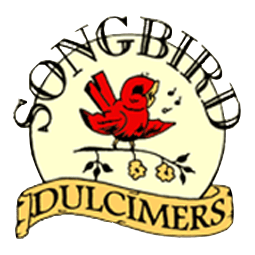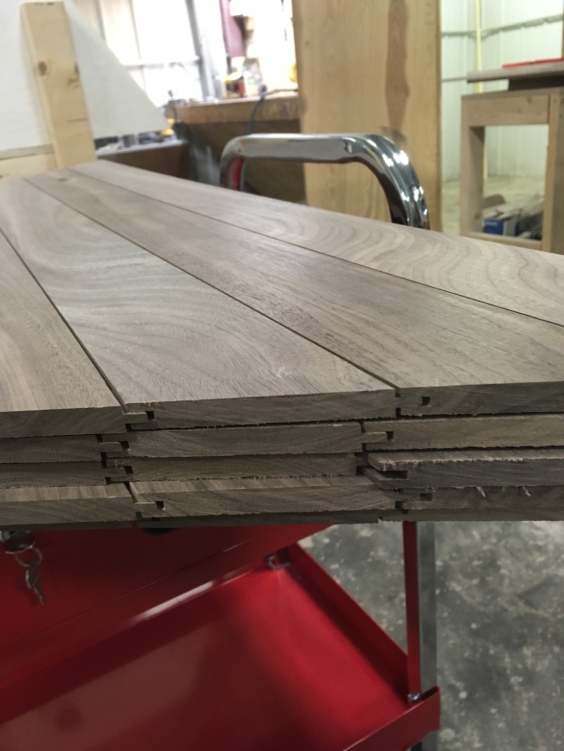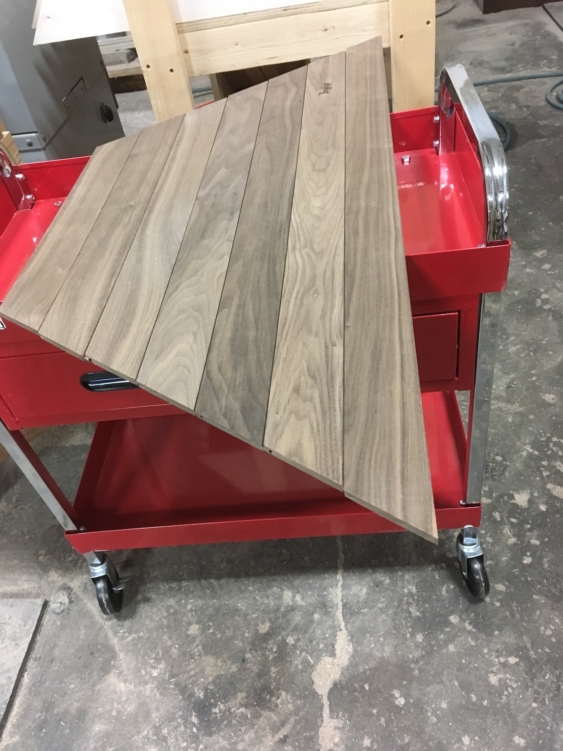January 15, 2019
Here is the why and how of the tongue and groove tops for the new Finch model hammered dulcimers. These are 2 photos of the tops before being glued to the frame, and you can easily see the tongue and groove joints.
Here is why we need to build them this way. I built special humidity box to test a dulcimer we had built in the fall and kept it at 70-80% humidity for a couple weeks. It did what it was supposed to do, the boards swelled all up and the joints narrowed but the dulcimer stayed in relatively good tune. The first is a photo of it after 2 weeks in the “sauna”.
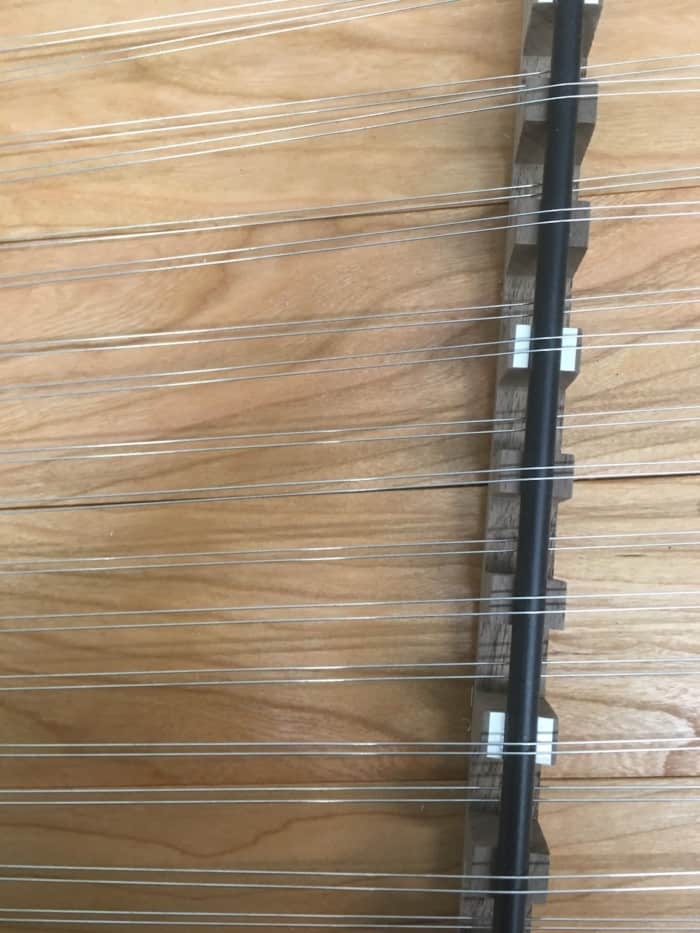
You can see the joints are very narrow. Below is the same dulcimer after 2 weeks of drying out in early winter in Iowa.
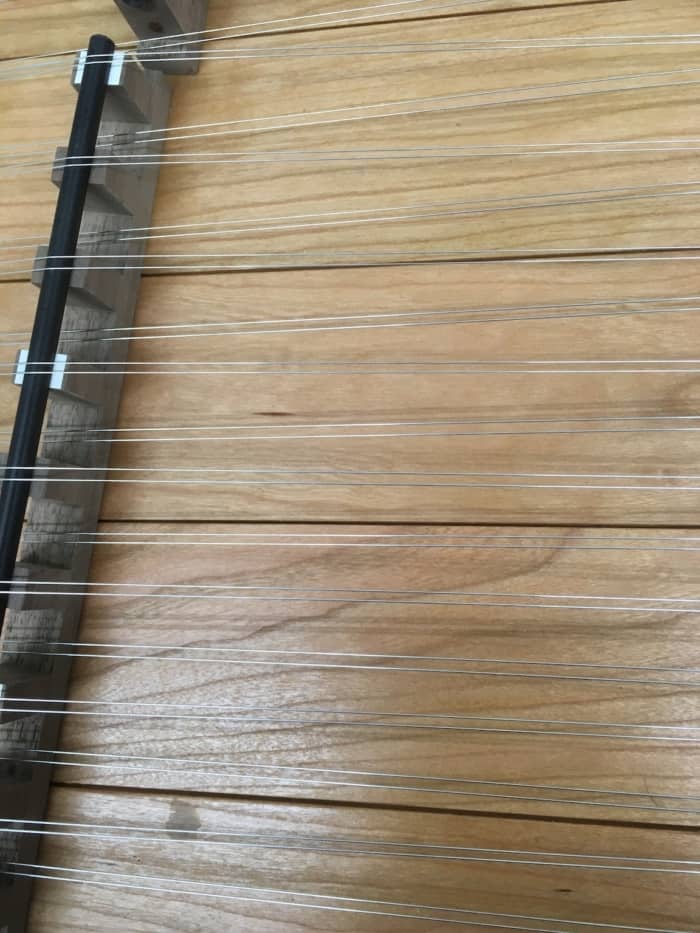
You can clearly see the difference. This dulcimer is cherry which is pretty stable, but all wood moves like this, some much more. The thing about this new design is the dulcimer stays in relatively good tune despite the changes. It went 40 cents sharp in the sauna, and when it dried, it went back. So 40 cents is the maximum, and it stays in fairly good tune with itself. Below is a photo of a dulcimer we built at the height of summer with dew points in the 70s in Iowa, and no air conditioning in the shop. We built it with the joints completely closed in July. Now all 6 have opened up as you can see. If this was an old fashioned one board top, there would be a couple nice cracks across it now.
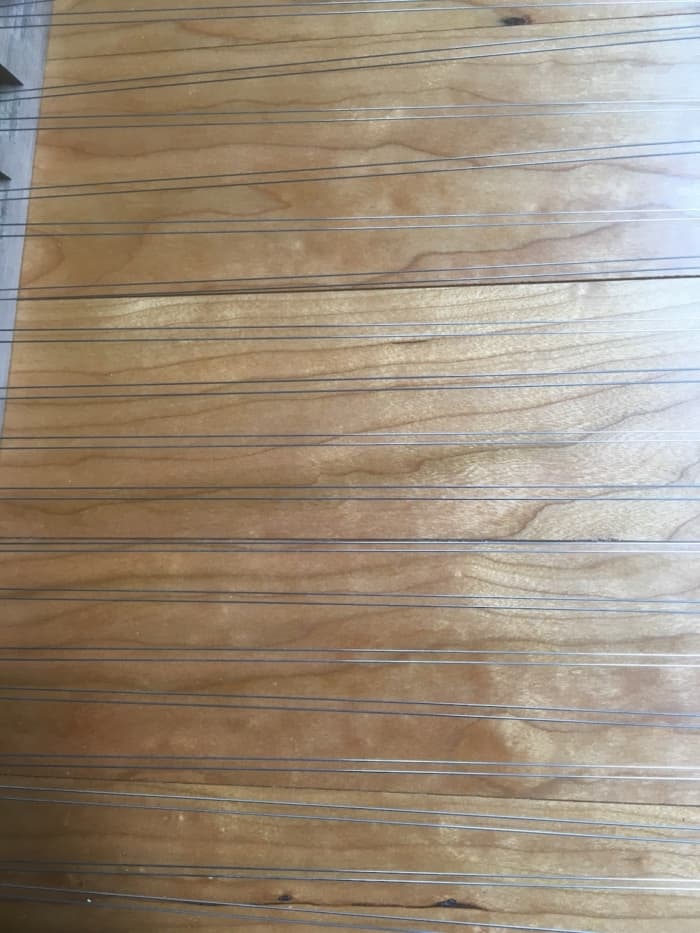
We believe that this is how solid wood, fixed top hammered dulcimers should be built. Other builders (as we have in the past) are making a mistake, and since this wasn’t our idea to begin with, we have just been entrusted with it, we hereby give anybody that so desires the right to build their dulcimers this way.
Chris and Melanie Foss
3 Comments
-
When I studied furniture making we were encouraged not to glue boards together but to allow them to move like this to avoid splitting. This makes perfect sense. Thank you for sharing your research and your blessing for us to use this.
-
How do the bridges stay stable when the cross-boards are swelling and shrinking season after season? Do you build these tongue-and-groove with laminated bridges as a standard feature, or would it not be essential?
